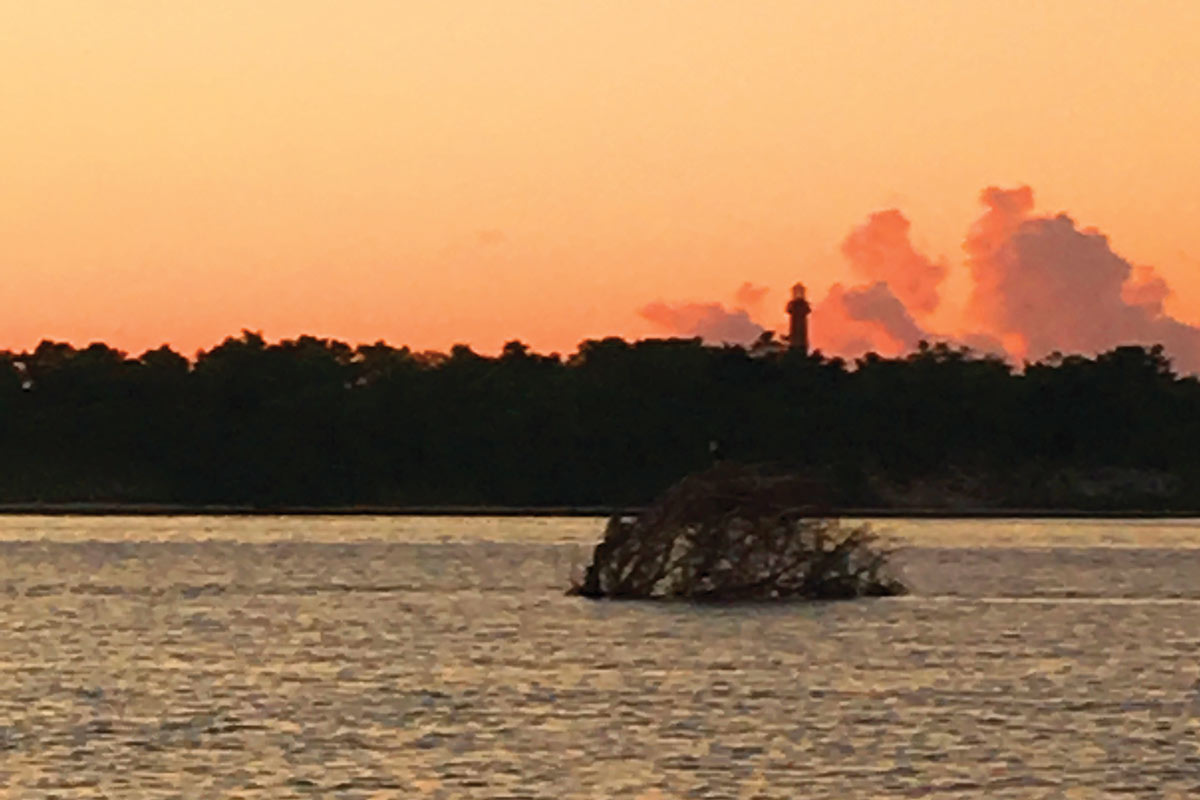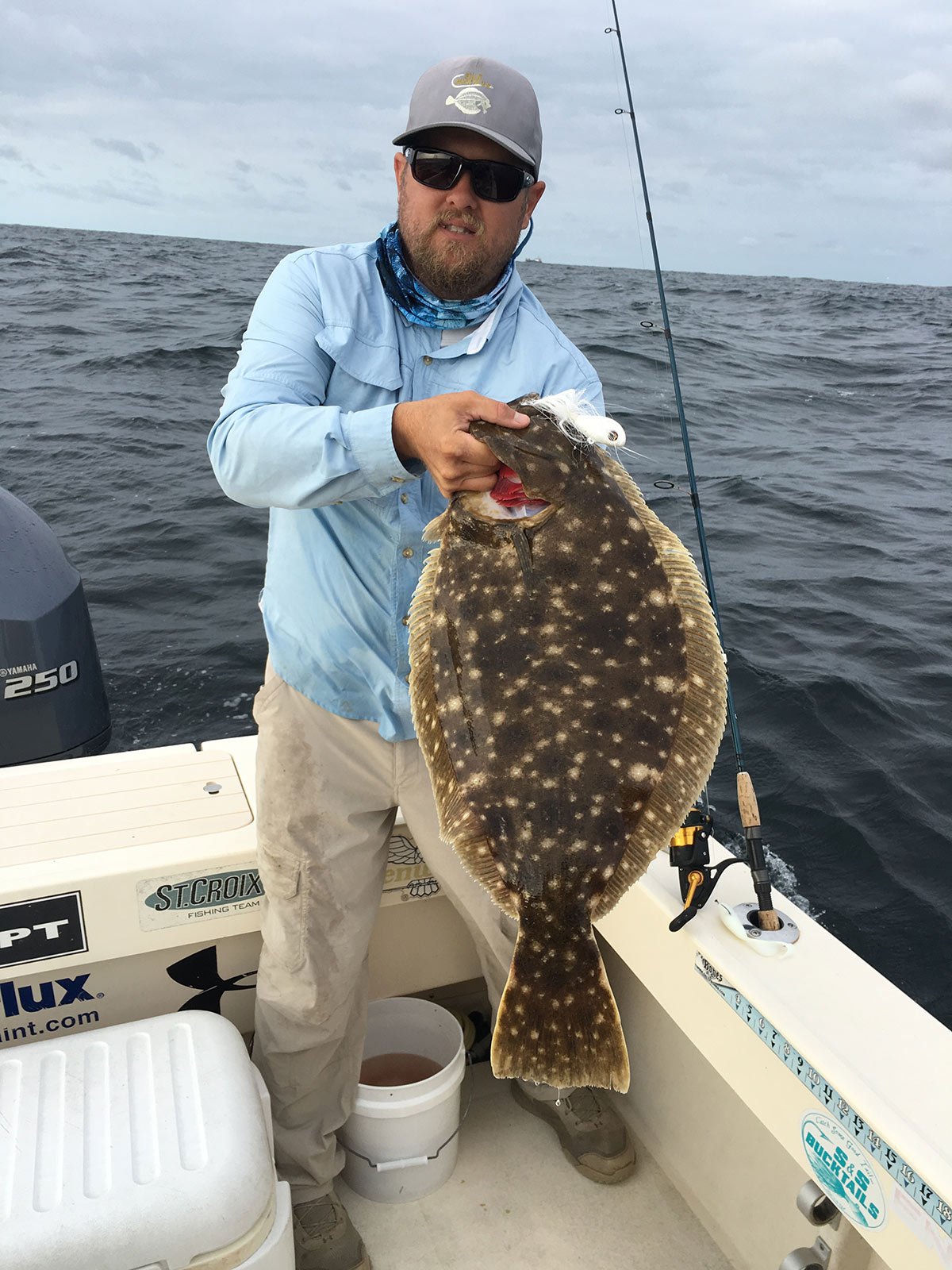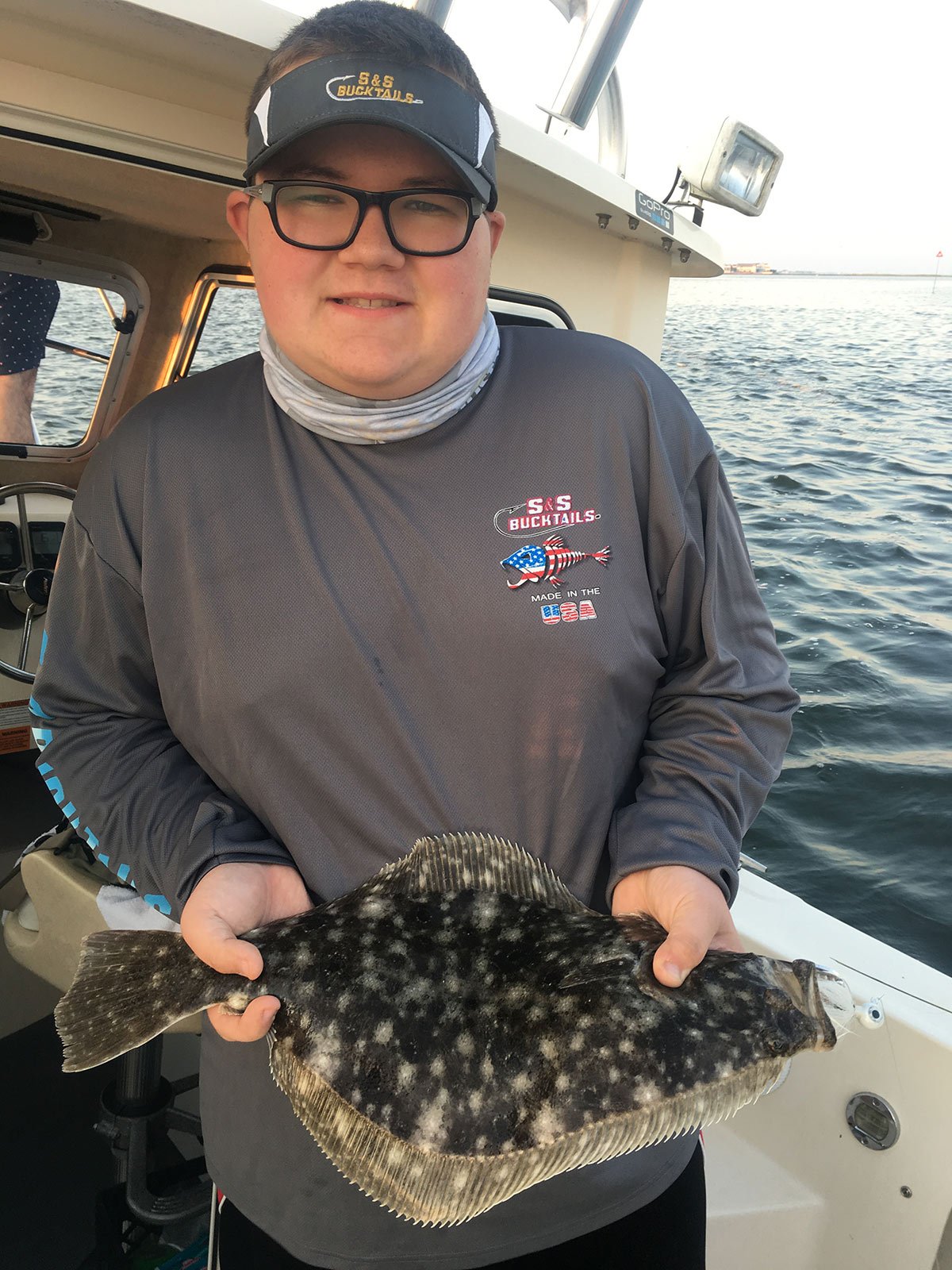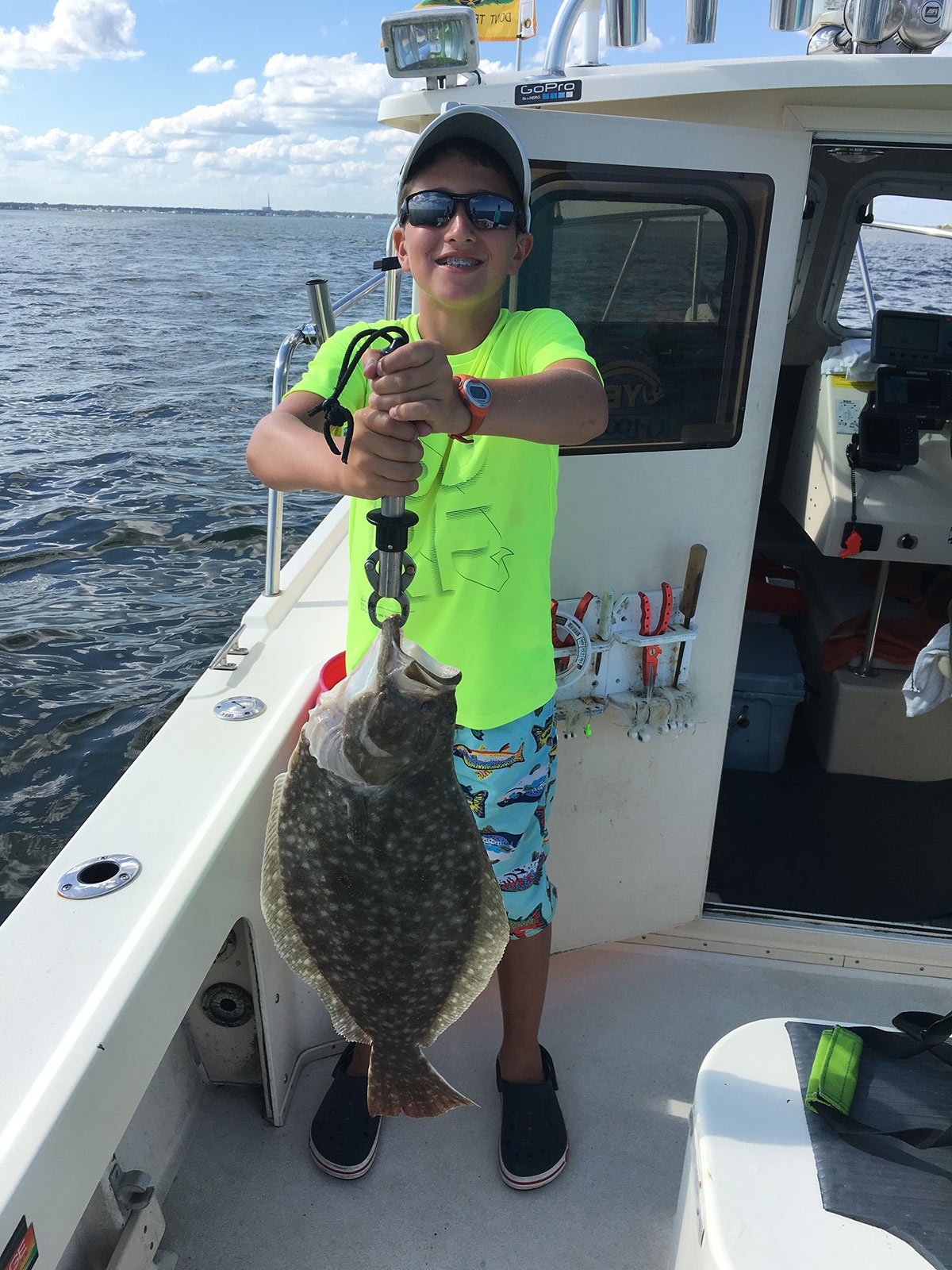
While the calendar says summer won’t officially arrive until June 21, fluke anglers will tell you the hottest time of the year has arrived.
Some anglers crave offshore fishing for pelagics like tuna or mahi, while others enjoy the intricacies of targeting bottom dwellers on structure. Personally, I lean towards plying the shallows for aggressive fluke. There is nothing like fishing in the skinny cuts of local estuaries, catching keeper summer flounder while ospreys hunt unsuspecting fish. It’s truly a sight to see. I guess you can say I love backwater fluking as it’s my absolute favorite type of fishing.
In spring and early summer, fluke take up residence in our estuaries and waterways as these areas provide excellent feeding opportunities due to a variety of baitfish and crustaceans. Young of the year baitfish, shrimp, and crabs develop and feed in these sanctuaries, unaware of the danger lurking around the next drop-off.
Since these areas are generally narrow and shallow, they present some major difficulties to boat anglers due to wind and current factors. The advancement of saltwater trolling technology has greatly increased our ability to target these skinny water flatties. Installing a Minn Kota trolling motor on my 23-foot Parker Sport Cabin has been an absolute game-changer for my charters, resulting in more and bigger fluke, particularly when dealing with difficult drifting conditions.
Know Your Target

The summer flounder starts its journey as larva just shy of the continental shelf where it develops, eventually moving back to the estuaries via ocean currents. These “baby fluke” will spend their first year of life developing and growing in preparation for their migration eastward. In the first year, growth rates show they achieve sizes up to 12 inches depending on the productivity of the estuary.
Over time as fluke increase in size some travel back to the same estuaries, tidal creeks, and areas they developed as juveniles. The months of May, June, and July generally present excellent opportunities to target these bigger sized fluke in back bay areas.
Fluke are aggressive ambush predators that lie and wait for prey expending the least amount of energy to capture their food source. They position themselves facing the current and feed on baitfish that get swept by the tidal flow. Typically, early season forage in the bays is made up of grass shrimp, spearing, minnows, mantis shrimp, and a variety of “juvenile” crab species. Grass shrimp, mantis shrimp, and crabs generally inhabit areas located near eel grass beds or muddy areas, whereas spearing and minnows are free-swimming and affected by tidal current fluctuations.
In May and early June, jigging baits in the 2- to 4-inch range are best as they match the profile of developing baitfish. As middle to late June approaches through the end of July, it is best to use sizes up to 6 inches to mirror local baitfish.
It is important to target areas that have warm water flow during the spring season as the start of the outgoing adjacent to muddy areas will have fluke more active. As the season progresses, switching to a cooler water, incoming tide will find fluke more around deeper drop-offs.
Effective Jigging Methods

Jigging bucktails is probably the single most effective tactic to catch bottom-dwelling fluke as most bucktails resemble, in profile and action, a variety of baitfish. Depending on current conditions, 1/4-ounce jigs up through 1-ounce are applicable for most skinny water applications with a 1/2-ounce being the “go-to” weight. The key is to use the lightest jig possible without losing a feel for the bottom.
A major factor that directly impacts the bucktail size is the sensitivity of the fishing rod. Since most of the depths that are targeted are between 2 to 10 feet, heavy tackle is not required and will reduce the lure’s effectiveness. A 6-1/2- or 7-foot medium to medium heavy rod with a fast action tip is recommended to feel subtle strikes, but the medium heavy power will provide enough backbone to muscle 10-pounders to the boat.
Line selection is another area of concern and with the latest braid technologies, it makes it a no brainer for its use on summer flounder. Braid has no stretch, which gives it extreme sensitivity and unparalleled strength, making it perfect for jigging in the back, especially around areas of structure. I prefer spooling my reels with Berkley Trilene braid in 10- to 15-pound test as it offers smaller diameter and better feel than traditional monofilament.
Since fluke are excellent sight feeders that take in most of their calories by ambushing prey, fluorocarbon leader is a must. I prefer 10- to 15-pound test as the fluoro strength required for this species given the irregular teeth position that causes them to generally not bite through leaders. When compared to the jaws of a bluefish, which regularly align, the difference becomes obvious.
When rigging for skinny water fluke, I use a simple barrel swivel attached to 18 to 24 inches of fluorocarbon leader via a uni-knot. The bucktail should be tied directly to the fluorocarbon with a uni-knot rather than using a snap. Again, fluke have excellent vision, and keeping bling to a minimum should improve hookups. Some anglers like adding a dropper loop 16 to 20 inches from the bucktail where a teaser can be fished, but this is optional.
Sound Shallow Structure
 Newer sonar technologies over the past several years have dramatically improved an angler’s ability to look underwater horizontally from their boat. It’s almost like someone is shining a flashlight port and starboard from the transducer. The signal from the sonar bounces off objects, humps or fish. The received signal will present shadows based on how high they are to the vessel. Longer “shadows” indicate a taller profiled object whereas shorter shadows indicate shorter objects.
Newer sonar technologies over the past several years have dramatically improved an angler’s ability to look underwater horizontally from their boat. It’s almost like someone is shining a flashlight port and starboard from the transducer. The signal from the sonar bounces off objects, humps or fish. The received signal will present shadows based on how high they are to the vessel. Longer “shadows” indicate a taller profiled object whereas shorter shadows indicate shorter objects.
Most units can “see” approximately 200 feet out on either side and will be able to pick up bottom structures that become important for shallow water fluke anglers. Side imaging units have the ability to produce excellent views of submerged pilings, humps, and drop-offs, which is a great asset working subtle cuts and channels in the backwaters. I mark these areas on my chartplotter and have clients cast and work jigs around these structures, which have a tendency to hold better quality fluke.
One benefit of employing the trolling motor is that I can maintain position around these structure points without anchoring or using a drift sock. The Spot-lock feature can keep the vessel in position, or the vessel’s drift speed can be greatly reduced using the trolling motor. Since summer flounder are aggressive ambush predators and focus on baitfish swept up by the current flow, it is necessary to present baits or lures at the correct drift speed and direction. Wind, current speed, and the way the vessel interacts with these can be a huge factor when fluking in the back bays.
Typically fluke hit baits presented at 0.7 to 1.5 knots; that’s important to keep in mind when fishing for this species. A few scenarios generally present problems for anglers such as: wind with tidal current or wind against tidal current, making the drift too fast, too slow, or in the wrong direction. In years past, I have used both my outboard and/or deployed a drift sock to combat these conditions. In recent years, a trolling motor has proven to be a tremendous asset as I can literally keep my outboard shut off as I control the exact speed I want without being at the helm manning the throttle the entire time.
Remember, tide, temperature, bait profile, and drift direction are critical factors to consider when probing the back waters for these popular flatfish.



